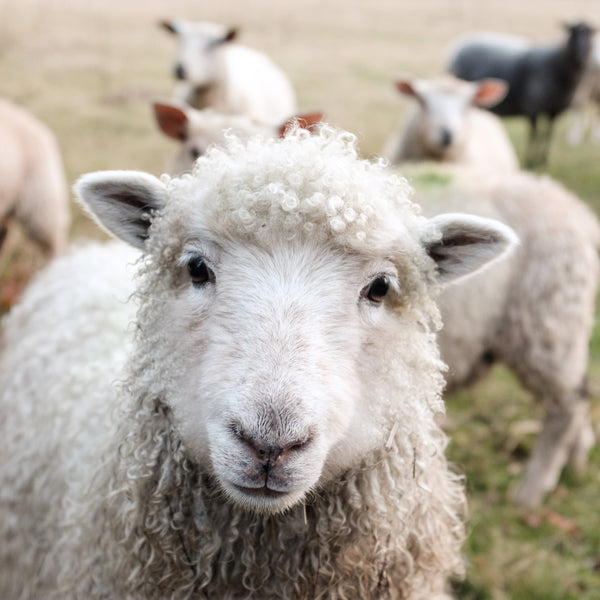
The Thread That Binds Us.
Wool, One of Life’s Essentials.
They say that a dog is man’s best friend but at Le Tricoteur we’d argue it is in fact the sheep.
As soon as primitive man domesticated the wild sheep, they were provided with all that was needed to sustain life: milk, meat and protection against the elements. With the arrival of the Romans in the British Isles in 55BC an already thriving wool industry went international.
Not only are sheep life sustaining they are also portable; ancient Britons already knew flocks could be easily moved from settlement to settlement across the land and when the Roman Empire in all its innovative glory established itself in England’s Green and Pleasant the wool trade went transcontinental.
The raw product was being traded all over the Empire and beyond and in return we were importing new breeds of sheep, introducing the Spanish Merino and the Danish short wool, two breeds that played a starring role in the husbandry of our modern-day beasts.

pic of Merino stock rams
Where there was bleating there was money!
Whether you were a humble shepherd or a rich as Croesus merchant, a monk or a bishop, wool made the world go around. By the 14th Century politics, war and the displacement of people became bound up in its story. Flemish weavers, who had had the monopoly on the weaving industry until now and imported their raw product from England, appealed to King Edward III, Edward of Windsor, King of England and Lord of Ireland, to protect their cloth making towns from their French overlords. The 100 Years War was a war of dynasties, territory, and wool.

pic from historytoday.com
So key was wool to Edward III that he ordered his Chancellor sit on a bale of wool, ‘the Woolsack’ as a symbol of the centrality of the wool trade to the economy of England in the Middle Ages (at the time there were 110,00 sheep in Sussex alone!)

house of lords where the woolsack remains
Those same Flemish weavers who had appealed to Edward for protection now found their imported raw supply heavily taxed as was their finished export product, the woven cloth. By controlling the wool trade, England raised vast sums of money for its King to finance his war. And so movement of sheep and the movement of people enter the story once more and the Flemish weavers, already discontented in their homelands, travelled to England bringing with them their skills and influence and helping to make England the centre of the weaving trade as well.
Guernsey also has her part to play in the history of this time and in the story of wool. In 1468, fighting back against attack by the French, the merchants of Guernsey put up the money to raise an army to help their Jersey neighbours expel the French from Mont Orgeuil.

1855 engraving of Gorey Castle at Mount Orgeuil
Mont Orgeuil, the fortress previously known as Gorey Castle, had been handed over to the French, supposedly as part of a plot by Margaret of Anjou, the French-born wife of Henry VI of England, in exchange for French support of money, arms, and mercenaries for the Lancastrian cause during the Wars of the Roses. In return for their payment for the army, the Guernsey merchants requested trade concessions from the King Edward III and a Royal Grant was obtained enabling the islanders to import wool. And so began the Guernsey textile industry that was to become a mainstay of the Island economy, weaving the island into the history of England, France, Europe and beyond, bound up in the trade of wool.

cartographer engraving of Guernsey and Jersey
The influence and history of the wool trade is seen all over the British Isles today; drovers ways still criss-cross our country now. The ones crossing the countryside recognisable by their high banks encased by trees to provide protection to the drovers and their flocks and herds.

photo by Jan Minter
The medieval wool towns of East Anglia still display their medieval wealth in the timbered houses and grand churches. Road and street names in our capital, Long Acre in Covent Garden, Shepherds Market in Mayfair, Shepherdess Walk in Hackney and Shepherds Bush in West London where shepherds rested their flocks before moving on to Smithfield market, link us to our ancient trading past. The drovers trade led to our modern-day banking system, whereby paper is exchanged for goods.
Wool is the titan of materials; it has it all, sustainability, longevity, variety. Whether we are knitting squares in school learning our craft, mastering the intricacies of moss and garter stitch, creating patterns representing our family, our town into a fisherman's jumper, we are literally knitting our private and public stories into the fabric of our history, of our lives.
